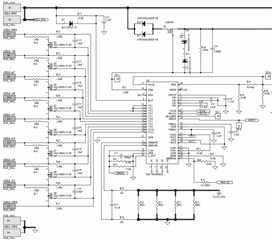I have a question regarding the application of the BQ77PL900 Cell Balancing in a Battery Pack we have currently in production. We have seen an anomaly in a few of the Battery Packs from a new build (temperature anomaly), and suspect it may be an application issue and would really appreciate TI Team input.
The question/request for input is surrounding the Cell Balancing. Our Battery Pack is comprised of 12S2P utilizing the External Cell Balancing (Current Sensing) circuit per your User Guide and Application Note/s (graphic copied/pasted below);

Per your notes (SLUA463), the values for Rextbal, Rext, and Cext should be 100Ohm, 10KOhm, and 0.01uF respectively. However, our application has these values at 10Ohm, 1KOhm, and 0.01uF (an order of magnitude shorter time constant)…below is copied/pasted snippet from our schematic;

Adjustments have been made to the FW to reduce/eliminate error in the offsets during temperature testing (-25C to +60C soak for one hour), however, a few of the packs exhibit a difference in current measurement reporting (IOUT – Pin29 of the BQ77PL900) between -0.01A to +0.06A over the temperature range.
Is this attributable to the values of the Rextbal, Rext, and Cext not following the recommended values or possible individual cell issues?

